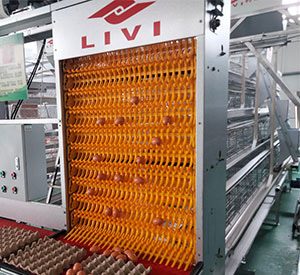In the ever-evolving world of poultry farming, selecting the right battery cage system is a critical decision that can significantly impact the productivity and welfare of your flock. With various options available in the market, understanding the nuances of each type can help you make an informed choice. This guide delves into the key considerations and benefits of different battery cage systems, ensuring you make the best decision for your poultry farm.

Understanding Battery Cage Systems
Battery cage systems are designed to house poultry, particularly laying hens, in a controlled environment. These systems maximize space efficiency and streamline egg production, making them a popular choice for commercial poultry farms. However, the choice of a cage system should be based on several factors, including farm size, budget, and bird welfare.
Types of Battery Cage Systems
-
A-Type Battery Cage System: This system is known for its simplicity and lower initial investment, making it ideal for farms with limited capital. It typically includes basic features like cage mesh, a water tank, and an automatic drinking system. Feeding and egg collection are often manual processes.
-
H-Type Battery Cage System: Designed for larger operations, the H-type system offers high stocking density and automation. It includes advanced features like automatic feeding, egg collection, and manure removal systems, making it highly efficient for large-scale poultry farms.

Advantages of Battery Cage Systems
Choosing the right battery cage system can offer numerous benefits:
-
Increased Egg Production: Battery cage systems are designed to optimize egg production by providing a controlled environment that minimizes stress and maximizes comfort for the hens.
-
Improved Bird Health and Welfare: These systems help maintain hygiene by separating birds from their waste, reducing the risk of disease and improving overall flock health.
-
Better Feed Efficiency: With precise feeding management, battery cage systems reduce wastage and improve the conversion of feed into eggs, resulting in lower feed costs and higher profits.
-
Easier Manure Management: The design of battery cages facilitates efficient manure management, reducing environmental pollution and enhancing farm hygiene.
Factors to Consider When Choosing a Battery Cage System
When selecting a battery cage system, consider the following factors to ensure optimal performance:
-
Farm Size and Capacity: Assess your farm’s size and the number of birds you intend to house. Smaller farms may benefit from A-type systems, while larger operations may require the efficiency of H-type systems.
-
Climate and Environmental Conditions: Consider the local climate and ensure the cage system provides adequate ventilation and temperature control to maintain bird health and productivity.
-
Quality and Durability: Invest in high-quality materials, such as hot-dip galvanized steel, which offer superior corrosion resistance and longevity.
-
Cost and Budget: While initial costs may vary, prioritize systems that offer long-term durability and efficiency to maximize profitability.

Cost Considerations
The cost of battery cage system can vary based on several factors:
-
Cage Size and Design: Larger and more complex designs require more materials and labor, impacting the overall cost.
-
Material Quality: Higher-quality materials may be more expensive upfront but offer durability and reduced maintenance costs over time.
-
Labor and Installation: Installation costs depend on the complexity of the system and the availability of skilled workers.
Tips for Selecting the Right Battery Cage System
-
Prioritize Bird Welfare: Choose a system that provides adequate space, ventilation, and lighting, allowing birds to engage in natural behaviors.
-
Conduct a Cost-Benefit Analysis: Evaluate the long-term benefits of investing in a high-quality system, such as increased egg production and improved bird health.
-
Consider Warranty and Customer Support: Select a supplier that offers a warranty and excellent customer support to address any issues that may arise.
Conclusion
Choosing the right battery cage system for poultry farm is a strategic decision that can enhance productivity, efficiency, and profitability. By considering factors such as farm size, climate, quality, and cost, you can select a system that meets your specific requirements and provides a safe and comfortable environment for your birds. As you embark on this journey, remember that investing in a high-quality battery cage system is an investment in the success and sustainability of your poultry farming operation.
For more insights and guidance on selecting the right battery cage system, explore our comprehensive resources or contact our team of experts today.

